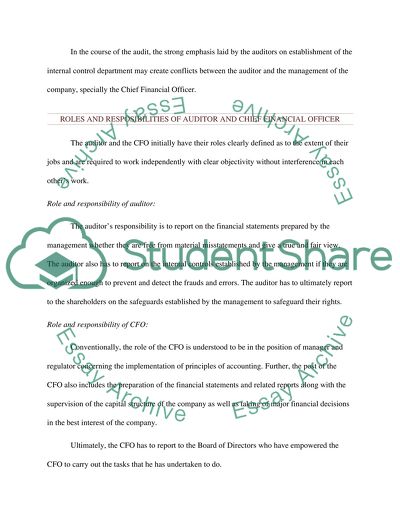Cite this document
(“Possible Inherent Conflicts Between the Public Auditor and the CFO on Case Study”, n.d.)
Possible Inherent Conflicts Between the Public Auditor and the CFO on Case Study. Retrieved from https://studentshare.org/finance-accounting/1584213-possible-inherent-conflicts-between-the-public-auditor-and-the-cfo-on-internal-controls
Possible Inherent Conflicts Between the Public Auditor and the CFO on Case Study. Retrieved from https://studentshare.org/finance-accounting/1584213-possible-inherent-conflicts-between-the-public-auditor-and-the-cfo-on-internal-controls
(Possible Inherent Conflicts Between the Public Auditor and the CFO on Case Study)
Possible Inherent Conflicts Between the Public Auditor and the CFO on Case Study. https://studentshare.org/finance-accounting/1584213-possible-inherent-conflicts-between-the-public-auditor-and-the-cfo-on-internal-controls.
Possible Inherent Conflicts Between the Public Auditor and the CFO on Case Study. https://studentshare.org/finance-accounting/1584213-possible-inherent-conflicts-between-the-public-auditor-and-the-cfo-on-internal-controls.
“Possible Inherent Conflicts Between the Public Auditor and the CFO on Case Study”, n.d. https://studentshare.org/finance-accounting/1584213-possible-inherent-conflicts-between-the-public-auditor-and-the-cfo-on-internal-controls.


